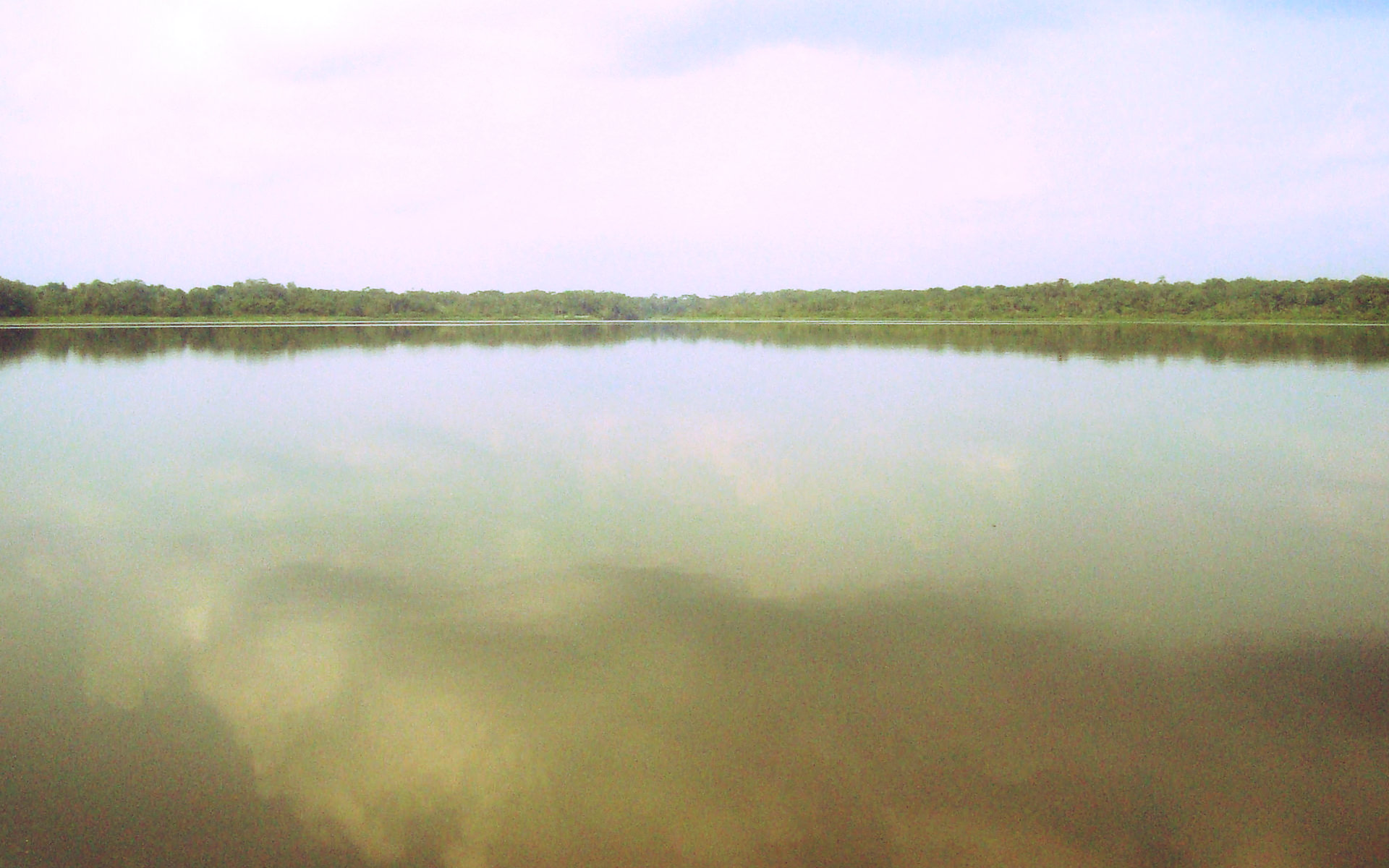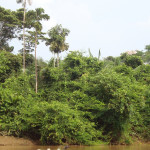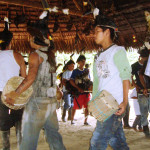The biological wealth and the mysterious beauty of the Amazon make this destination one of the most desired by world travelers. Thousands of unique species live in the Amazon, which is the largest remaining area of tropical forest in the world.
In Ecuador, the Amazon is one of the four existing natural regions. It comprising the territory of six provinces: Orellana, Pastaza, Napo, Sucumbíos, Morona Santiago and Zamora Chinchipe. It occupies an area of 120,000 square kilometers, inhabited by lush vegetation of the wet-tropical forests.
The boundaries of the Ecuadorian Amazon are marked by the Andes Mountains, in the western part of this region, while Peru and Colombia the southern and eastern boundaries lie respectively.
The Ecuadorian part of this great jungle territory, bathed by huge rivers and traversed by water body -the world’s mightiest river Amazonas is one of the most biologically rich regions around the globe, as it sits on various altitudes formed at its junction with the Cordillera de los Andes.
In Ecuador, the relief of the Amazon is made up of hills that originate in the eastern Andes and descend to the plains of the Amazon, joining with the Sierra region of the country. This allows travel from the Andes to the Amazon is simple and relatively short (6 hours on average, from Quito), unlike what happens in other African countries, where the regions are separated by vast distances, making it difficult access to the Amazon area.
Numerous rivers originate in the eastern Andes mountains and the Amazon. They are flowing bodies of water, although in most navigable course. The most important are:
Rio Napo: is formed by the springs that come from the provinces of Tungurahua and Cotopaxi. In his route it receives waters of the Coca, Aguarico and Curaray. By joining the Maranon River, form the Amazon.
Pastaza River: born with the name Cutuchi and Patate river, and flows into the Marañón river.
Rio Santiago: The result of the union of the Namangoza and Zamora rivers. Also it flows into the Marañón river.
All these references give an idea of the richness and beauty of this region, it is on the list of “must see” of thousands of people.

Recognized as one of the most mega-diverse places in the world, the Ecuadorian Amazon is on the list of many travelers.
Some of the attractions included in this list are:
Cuyabeno Reserve : Located in the Province of Sucumbíos, in northeastern Ecuador’s Amazon region, is one of the most biodiverse places on earth. It measures 603,380 ha. and brings together a varied and unique wildlife. It contains a complex system of 13 lakes, rivers and tropical forest.
The Yasuni National Park: Designated by UNESCO in 1989 as a biosphere reserve, covers an area of 9,820 square kilometers in the Amazon basin, 250 km southeast of Quito, Ecuador’s capital. It is a jungle park where the Huaorani nation is, as well as groups in voluntary isolation as wao, the Tagaeri and Taromenane.
Puerto Misahuallí : A spa white sand, located 30 minutes from the city of Tena, in Napo province. Also known as the “Forest Gate”, for being the place from where many expeditions to the bottom of the Amazon begin.
Reserve Limoncocha : Internationally recognized as one of the most important wetlands of Ecuador, this reserve is located in the province of Sucumbios, in the Shushufindi. It is the habitat of wildlife such direction and endemic species. It is located at an altitude of 228 meters above sea level.
There are many more attractions that make the Ecuadorian Amazon a place worth visiting. However, so far this exotic destination, some fear to travel there. In order to help them make the decision, we have prepared a guide here basic tips to prepare your trip to this wonderful part of the world. Please note:
A cruise or lodge: Choose the option that fits your needs
Visit the Ecuadorian Amazon does not necessarily mean sacrificing comfort and even luxuries, if you prefer that style of travel. In the Ecuadorian jungle, the possibility of staying on cruises along the rivers or in beautiful lodges for every budget, built in harmony with nature .
As you can see from these travel programs, there are basically two cruisers among which you can choose. Look great on the characteristics of each and be sure to book your tour in advance. It depends on your time and how they want to travel, but it is advisable to choose a tour of at least 4 nights, so you can travel farther and have time to learn wilderness areas and national parks.
One difference that is worth taking into account is that in most Amazonian rivers cruises, even the smallest, there is air conditioning, lodges services generally do not possess. We must also know that the cruises offer very complete itineraries, from Coca to the Yasuni National Park. However, you may not want to travel long distances, but feel the isolation of the jungle and learn more about a specific area. In that case, stay in a lodge better option.
Wildlife and seasons trip to the Amazon in Ecuador
As all experts recommend any trip better if you know in advance the possibilities and limitations it will have on your chosen destination. For a trip to the Amazon, it is important that you investigate, for example, on the species, in fact, be found in this region of the world and finds out which ones are not in sight, but live in the Amazon. That way, you will avoid disappointment.
Another important river is the river stations. For six months (December and May), the rivers rise and flood the low shores. The consequence is that many forests are underwater.
This season, it can be expected to fall between 60 and 180 centimeters of rain in some places. It is a good moment to appreciate fruit riparian plants and flowers as well as to watch birds and monkeys in the river. Exploration by canoe flooded forests are an activity that can be done in these months.
In contrast, the “ebb” season, the rivers carry less water and sandy shores and land are more spacious. It is in this season when forest dwellers made their crops. In recent months, travelers can see long sandy beaches along rivers and increase the chances of exploration and hikes.
In both seasons it rains though with different intensities. It is therefore important that trip when traveling, you consider bringing a waterproof sweater and easy drying clothes.
What to wear? Clothing, Healthcare and Photography and Video
For those traveling for the first time to the jungle, it can be difficult to choose what to put in the suitcase. The precautions are fine, on a trip like this, but if exaggerated will be charged a weight that will create problems.

Specialized local guides accompany visitors on their journeys.
Here are some tips on what to bring to the Amazon:
Comfortable, better if it’s light colored (dark attract bugs), not plastic, which produce more moisture and warm clothes. The cotton clothing are most suitable. Despite what you’ve seen in movies, strap sandals are not a good idea to walk in the jungle. Better you choose boots and / or a closed shoes, which will be more últiles in swampy areas and avoid mishaps with bugs and leeches.
For the same reason, it is best to wear long pants and shirts, all in lightweight material and preferably fast drying.
Medications: If you take a particular medication is best to make sure to bring extra dose necessary and even then will not be easy to find certain drugs during your trip.
You may want to include in your luggage some analgesics or antihistamines for headache or discomfort from itching some bugs. Sunscreen and repellent mosquitoes are básicos.Y something very important: the yellow fever vaccine and tetanus should be made with an advance of at least 10 days before travel.
Chargers for their computers, flashlights and sealed plastic bags to protect valuables complement his luggage.
When in Rome do as the Romans:
During his stay in the Ecuadorian Amazon, you will have the opportunity to interact with members of the indigenous communities living in the area, except, of course, the uncontacted groups.
Many are accustomed to the presence of tourists, but it is very important that you maintain an attitude of respect. If you take pictures or make films people or the environment, be sure to ask if you do not mind. In some places, especially in the more touristy, it is possible that people ask a few coins in return. The choice is yours, but not without saying that if someone asks for money in exchange for posing for a photo, and you’d rather not give it, you better not take that photograph or do that video.
Indigenous nationalities living in the Ecuadorian Amazon are:
Amazon Kichwa Nationality: They are located in the north-western part of the Ecuadorian Amazon region, in the upper area of the Province of Napo, Sucumbíos. The Kichwa as their mother tongue and the second language is Spanish. One of the features of this nationality is usually put pepper in the eyes of newborn children, to teach them to be bold, and the disobedient youth, as a form of punishment.
Cofán: They have presence in Colombia and Ecuador. In the Ecuadorian Amazon they are located in the province of Sucumbios, along the Aguarico, Guanúes and San Miguel rivers, including the area of Lago Agrio. It called itself as A’i, meaning, people; It has about 1000 inhabitants nationality. In his medical practice, it is shamanism,
Secoya Nation: Also present in the states of Peru and Ecuador. In Ecuador, located in the province of Sucumbios, Shushufindi, San Roque parish and in the Cuyabeno canton, parish Tarapoa on the banks of the Aguarico River. Its territory is legalized 39,414.5 ha, its language is paicoca and the approximate number of inhabitants is 380. In their territories the state has declared the Cuyabeno Wildlife Reserve.
Siona Nationality: have presence in Colombia and Ecuador. In Ecuador they are in the province of Sucumbios, Putumayo canton, parish Puerto Bolivar; and in Shushufindi, San Roque Parish. The population is approximately 350 to 400 inhabitants, settled in three communities Puerto Bolivar, Bi’aña and Orahuëaya. The “curaca” (shaman) has an important role in the life of the community and by the ritual consumption yaje contacts with the five levels of the universe and its colors.
Huaorani Nationality: The Huaorani or Waorani are also called sabela, auishiri, Auca and huao. Wao Terero speak the language and have approximately 13,000 inhabitants, of which about 3,082 are in Ecuador. The Wao territory is currently 790,000 hectares.
Tagaeri Nationality: The origin of the Tagaeri (people of Taga) is related to his rejection of forced contact with the world. The warrior chieftain Taga, belonging to the Huaorani people, went into hiding in the jungle and maintain their ancestral way of life in the forest and away from “civilization”. The Tagaeri Terero Wao speak the language. It is estimated that there are perhaps only 20 to 30, although these numbers are uncertain.
Taromenane Nationality: The Taromenane are installed on the border with Peru, totally unpopulated areas. very little is known of them, just old stories of the Huaorani, describing them as fast as warriors like the jaguar and precise and very big guns. They live within the Yasuni National Park. They keep themselves hidden, and even cook at night so as not to be located by the smoke.
Shuar Nationality: The Shuar nationality is present between the two countries: Ecuador and Peru. It currently has an area of 900,688 ha. Its population is 110,000 inhabitants (1998), settled in approximately 668 communities. They are engaged in agriculture, fishing, hunting.
Zápara: Located to the east of the province of Pastaza, south borders with Peru. Its inhabitants are 1300 people have about 401,006.103 hectares territory, the population engaged in hunting, fishing and very little agriculture. There are 10 communities Zapara;
Shiwiar Nationality: The Shiwiar are located southeast of the province of Pastaza, Pastaza canton, parish Corrientes River. Their language is Shiwiar Chicham, which means knowing jungle family. Current generations are trilingual speak Shiwiar Chicham, Kichwa and Spanish. Its population is approximately 697 people.
On the guides
Having or not a good guide can make all the difference on a trip to anywhere, but especially to the jungle. In general, the guidelines you find on cruise ships and small boats are specialized, most of them natives and bilingües- with good knowledge of the area and ability to transmit naturalist guides. In lodges, however, the quality of the guides may vary. In general, in the most exclusive accommodation it is where you will find the best naturalist guides.
When we talk about local guides, we mean that belong to indigenous communities in the area and have much knowledge about nature, the environment, traditional medicine, human groups, habits and customs of the area.
In that sense, pay a little more can be a good investment to ensure that the accompanying guide is a plus on your trip. Note that it is preferable that the guide of the trip is hired by a tour operator or service that is part of daily excursion from the lodge where you are staying.
The paradise for bird watching
About 800 species of birds inhabit Ecuador’s Amazon. Many of them can be seen close up or with a pair of good binoculars. Those who love bird watching will appreciate the specific outputs, guided by ornithologists and biologists, and also specialized naturalist guides. Be sure to find out in advance if the lodge or the cruise have chosen such expeditions. Overall, the season “water” (from December to August) will be the best to see the most beautiful and striking species.
Some of the birds you can see in the Ecuadorian Amazon area are:
- The Amazon Parrot: One of the rarest birds in the world, is an endangered species. It is estimated that only 600 birds remain in the wild, you need two habitats – mangroves and dry forests – in order to survive.
- Rufous-the Potoo, also known as Rufous and red urutaú biemparado is located in Ecuador, (northeast, over 25% of the country). Also, although to a lesser extent in Brazil, Colombia, French Guiana and Guyana.
- The red-necked Cotingo, a species of bird in the ‘Cotingidae’ family. She can be found in the western Amazon basin in Brazil, Colombia, Ecuador and Peru. Also lives in the state of Amazonas, in the southern border region of Venezuela.
- The batará Cocha, passerine bird that lives in the northeast of the Ecuadorian Amazon. One of the best areas to observe this species are the vast forests flooded the Cuyabeno Wildlife Reserve.










